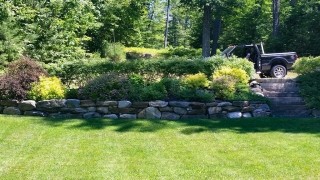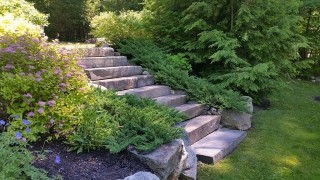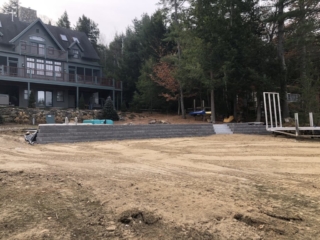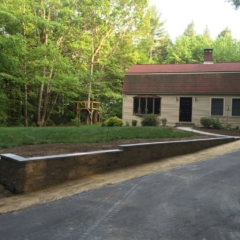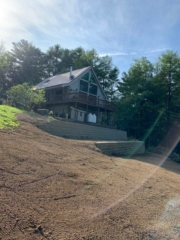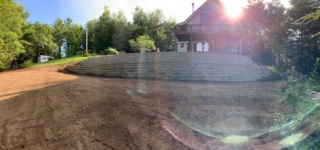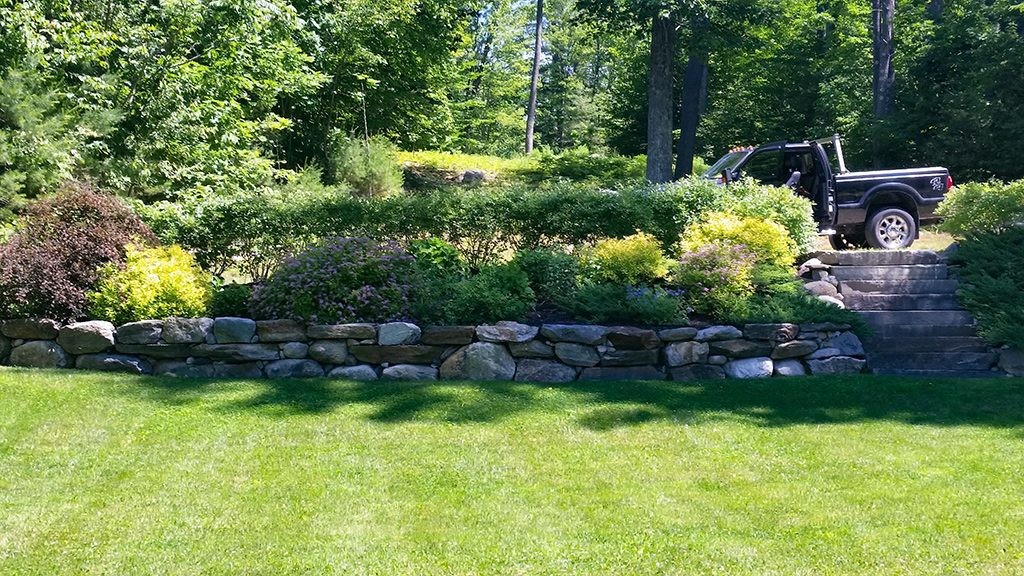 An excellent solution to a home landscape that is not perfectly level is to build a retaining wall. There are many different styles and patterns of retaining wall block available. There are many landscape contractors who can construct a wall. A common misbelief of many homeowners is that the retaining wall block itself supports the wall. The block surprisingly does little to hold back the earth behind it. To build retaining walls, the installer must understand soil types and water drainage behind the wall they are building.
An excellent solution to a home landscape that is not perfectly level is to build a retaining wall. There are many different styles and patterns of retaining wall block available. There are many landscape contractors who can construct a wall. A common misbelief of many homeowners is that the retaining wall block itself supports the wall. The block surprisingly does little to hold back the earth behind it. To build retaining walls, the installer must understand soil types and water drainage behind the wall they are building.
Water shapes the landscape. The most important component of any retaining wall is an adequate amount of clean drainage stone and a footing drain to remove the water that results from heavy rain. Without proper drainage, water pressure from storms will build up behind the wall and eventually push the wall over. Many concrete retaining block systems have tabs, pins or tongues and groove concrete molded into the block- but these are tools for the installer to help keep the wall straight during construction. Redirecting stormwater flow is the highest priority in building a wall that will last.
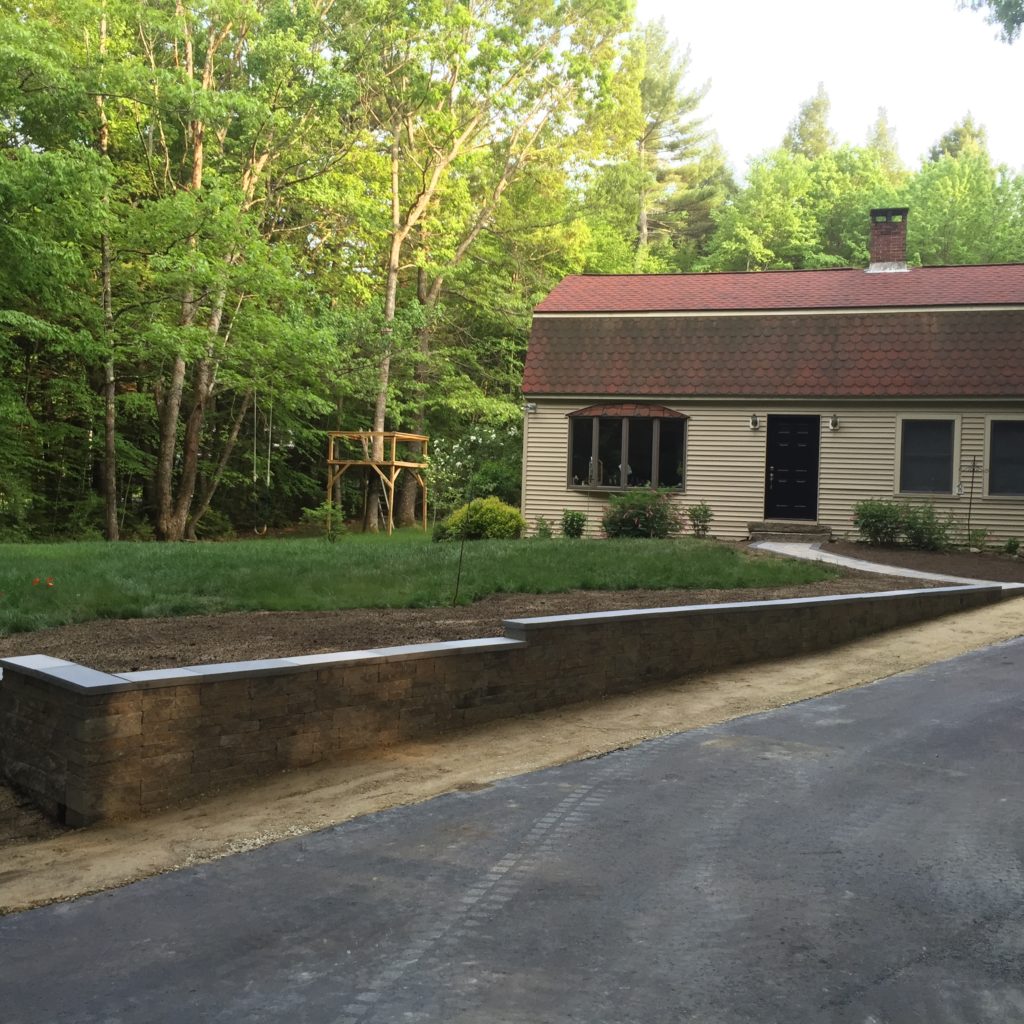 How much earth will a retaining wall hold? The answer to this question depends on several things. How steep is the slope behind the wall? What type of soil is on the site? Is it a “cut wall” or a “fill wall?” The solution to leveling the landscape in your yard successfully is a little more involved than picking a style and color of concrete retaining block that you.
How much earth will a retaining wall hold? The answer to this question depends on several things. How steep is the slope behind the wall? What type of soil is on the site? Is it a “cut wall” or a “fill wall?” The solution to leveling the landscape in your yard successfully is a little more involved than picking a style and color of concrete retaining block that you.
There are very few town or state building code standards regarding retaining wall construction. Our retaining wall installers follow the guidelines from the National Concrete Masonry Association or NCMA. NCMA has provided recommendations for retaining wall installers and has become the standard for best practices in the industry.
